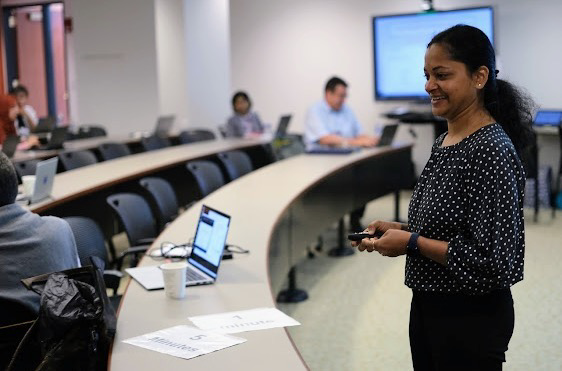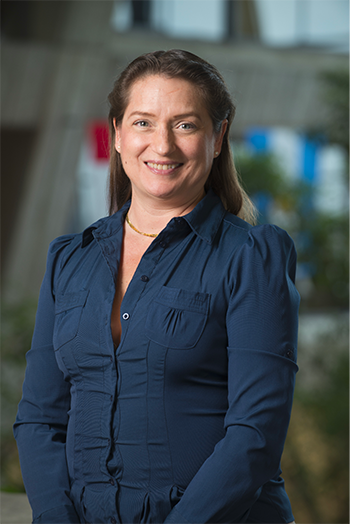
Elizabeth Sexton-Kennedy. Photo credit: Fermilab.
In spite of many efforts over the years to diversify the landscape of various STEM fields, women remained stubbornly and chronically underrepresented in software. According to a 2022 report on gender diversity in software engineering, women accounted for merely 21 percent of software engineers in the U.S.
At the IRIS-HEP collaboration, the current and next generation of women in software development are working together toward the future of high energy particle physics. Collectively, the women of IRIS-HEP are integral members of the software research and development efforts which will go towards ensuring the success of the future High-Luminosity Large Hadron Collider (HL-LHC). Elizabeth Sexton-Kennedy, a computer science researcher at the Department of Energy’s Fermi National Accelerator Laboratory and member of the IRIS-HEP advisory board believes that representation for women in software develops in pockets. For example, “If you have a female mentor in software and computing, your specific group might attract more women,” she said.
Here, a grouping of women working with the IRIS-HEP collaboration share their thoughts on how to encourage more women to join software and the opportunities the collaboration provides to young researchers in the field.
Encouraging Women in Software
Within the wider world of software environments, Oksana Shadura, a software engineer with the University of Nebraska, said she knows that at IRIS-HEP there are “a lot of efforts to hire women as well as promote them.”
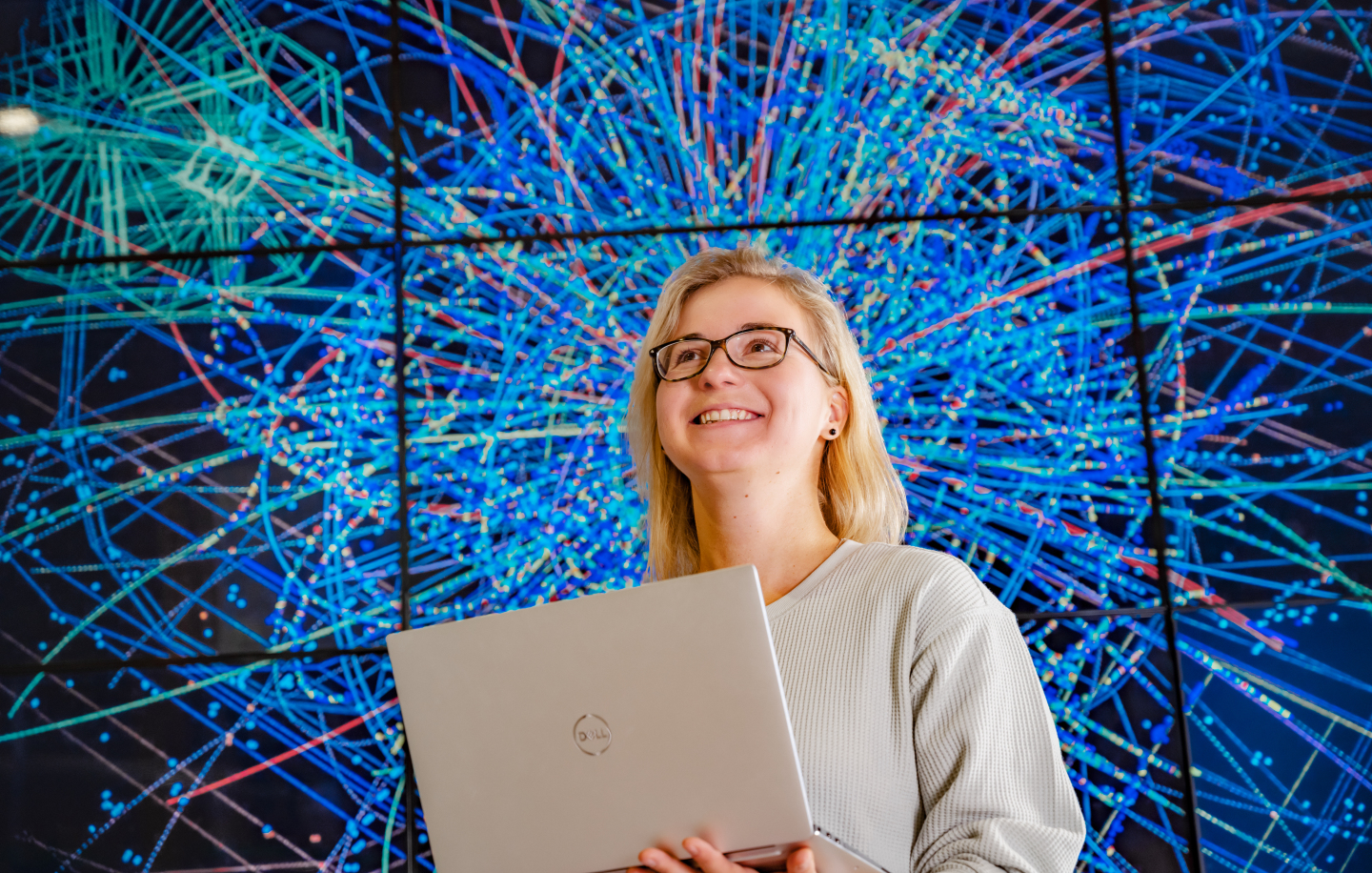
Oksana Shadura. Photo credit: Noemi Caraban Gonzalez/CERN.
Shadura believes the question of why women are so underrepresented in software is complex and without a single answer. The main thing, she said, is to provide an environment where women don’t feel like they have to choose between their career and family. “I noticed that at conferences in high energy physics we still have an issue that childcare facilities are not the default, for example,” Shadura said.
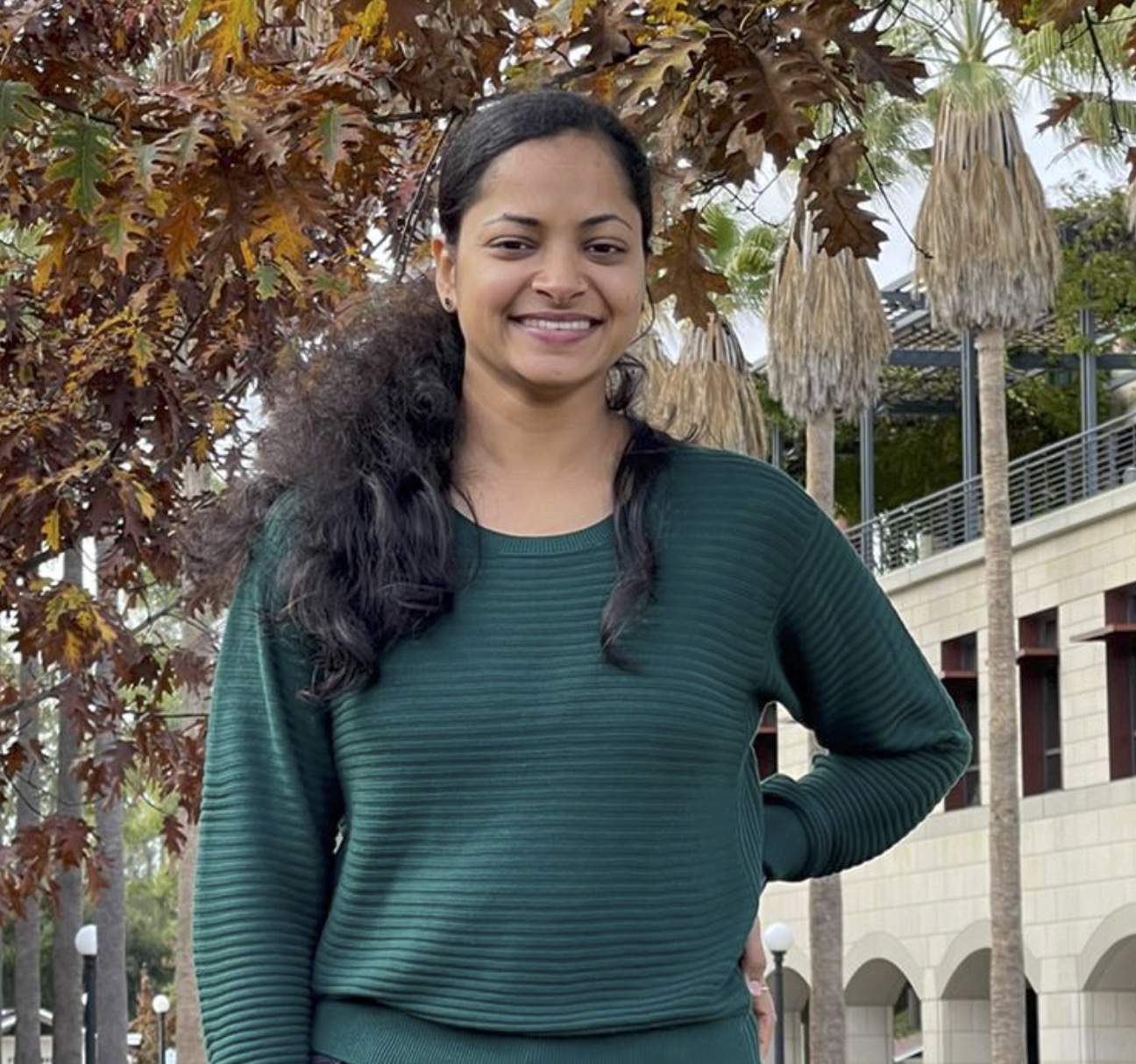
Rocky Bala Garg. Photo credit: Rocky Bala Garg
Beyond allowing women to foster balance in their work lives and personal lives, it’s also crucial to foster an inclusive and welcoming environment to prevent feelings of alienation in the workplace. Rocky Bala Garg, a postdoctoral researcher with Stanford University, has recognized an absence of role models for women and minorities in software. “Most of the role models that we see are men and we don’t see many popular role models for women and minorities in these fields,” she said. “This creates a visibility problem and it’s difficult for these people to envision themselves as having a career in software.”
Bala Garg believes that putting women and minorities in crucial leadership roles would provide the role models which could be pivotal in encouraging others to enter the software field.
IRIS-HEP and Opportunity
The key to empowering women in software goes beyond just encouraging them to join a project. Once a collaboration has a young, diverse cohort of researchers, it’s important to provide them with opportunities for growth and success as they move along in their career.
In order to become a tenured professor, for example, a person must be doing excellent research. “And you need the resources to do it,” said Heather Gray, an associate professor at the University of California, Berkeley. IRIS-HEP is among the types of projects which provide those resources to young researchers, allowing them to work on interesting problems in the field.
“IRIS-HEP is enabling science which is helping people progress in their careers in ways they may not have otherwise,” said Gray.
At IRIS-HEP, Gray is working on rewriting software to recreate the trajectories of charged particles moving through the particle detector. With the newer technology behind the HL-LHC, it’s crucial that the software be fast enough for the upgraded facility. “Working on these algorithms is going to be critical if you want to do physics there,” said Gray.
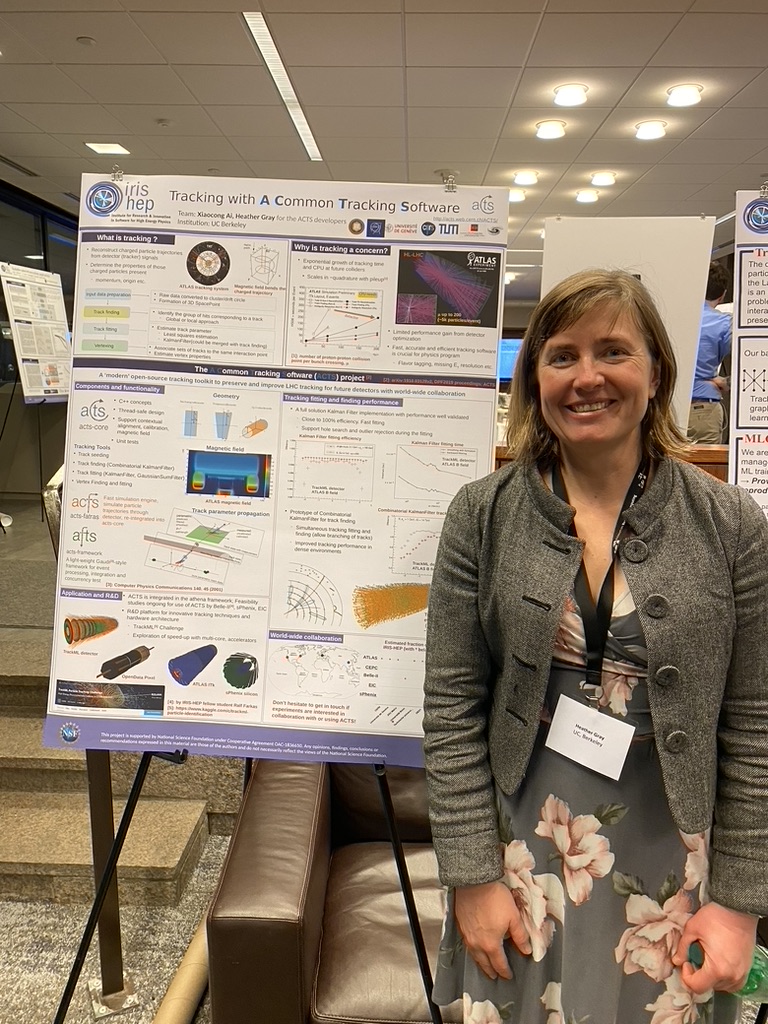
Heather Gray. Photo credit: Heather Gray
Like Gray, Bala Garg is bringing innovation and new ideas to this particle track reconstruction software. “Track reconstruction is one of the most important parts of any high energy physics experiment because it helps in not just identifying the trajectories of particles but also some very crucial event properties,” said Bala Garg.
Bala Garg said she is particularly grateful for the opportunities IRIS-HEP has provided her to work with a range of experts in the field. Being a part of the international collaboration, she gets the opportunity to remotely interact with other researchers all over the world. “I get to learn a lot from these people,” she said. “This has been a very good experience for me.”
For her part, Shadura is working on development of an analysis facility featuring more efficient and faster data access for physics datasets used in high energy physics data analysis. “The goal of this facility provides also an modern development environment for physicist and to enable the execution of increasingly complex analyses for the HL-LHC needs,”” said Shadura.
Together, the IRIS-HEP researchers are propelling forward technology which will allow scientists to study elementary particles like the Higgs Boson in greater detail than before, with the goal of beginning data collection in 2029.
“The research that’s going in to figure out how physicists can actually access all that data in a meaningful way that can produce the results that are worthy of all the spending that’s being done to build the accelerator and the upgraded experiments – there’s a lot of good work going on in that area,” said Sexton-Kennedy.
IRIS-HEP fellowship programs allow for students to get involved in developing new ideas for research and software development. Bala Garg said she’s worked with a diverse array of fellows at IRIS-HEP over the last couple of years.
“I would encourage everyone at the beginning of university to apply for an IRIS-HEP fellowship,” said Shadura. And in the end, Shadura has one last piece of advice for all girls looking to break into computer science and software development, “Just don’t give up, don’t listen to anybody and join our army of female computer scientists.”
